Fourth of July represents so much more than independence. It’s a day that celebrates American ingenuity, the freedom to challenge convention, and the spirit of innovation that continues to drive the nation forward. Nowhere is that spirit more evident than in America’s deep-rooted love affair with the automobile. While the auto industry today certainly has its fair share of challenges, you can’t forget that from pioneering the moving assembly line to popularsing the utilitarian off-roader with the WWII Jeep, building legendary V8s, and pushing EVs into the mainstream, the U.S. has persevered, thrived and helped shape the global automotive landscape for over a century.
While muscle cars and pickups are at the very core of American car culture, the nation’s role in developing mid-engined performance machines is equally rich and worth celebrating. All three of Detroit’s Big Three- Ford, GM, and Chrysler have explored this sophisticated format. In the 1960s, Henry Ford II famously greenlit the GT40 project to take on Ferrari at Le Mans, leading to one of motorsport’s most iconic triumphs and placing mid-engined American engineering on the world stage. Around the same time, GM’s visionary Zora Arkus-Duntov was quietly waging his campaign for a mid-engined Corvette, producing a string of radical prototypes that paved the way for the C8 in 2020.
Today, the Chevrolet Corvette C8 stands as the realization of that vision: a truly American mid-engined sports car that has made exotic performance more attainable than ever. Meanwhile, hypercar makers like Saleen, SSC, and Hennessey continue to push boundaries at the highest levels, with cars like the Ultimate Aero (fastest production car in the world: 2007-2010 at 256.18 mph) and Venom F5, and proving that the American dream can still break records. But long before the C8 or any modern hypercar, there were countless others, including boutique manufacturers, that dared to dream big by putting the engine behind the driver. Here are 10 such wild concepts that defied the status quo, and while they never went into production, they pushed the limits of engineering and reimagined what American performance could be.
1968 Chevrolet Astro II
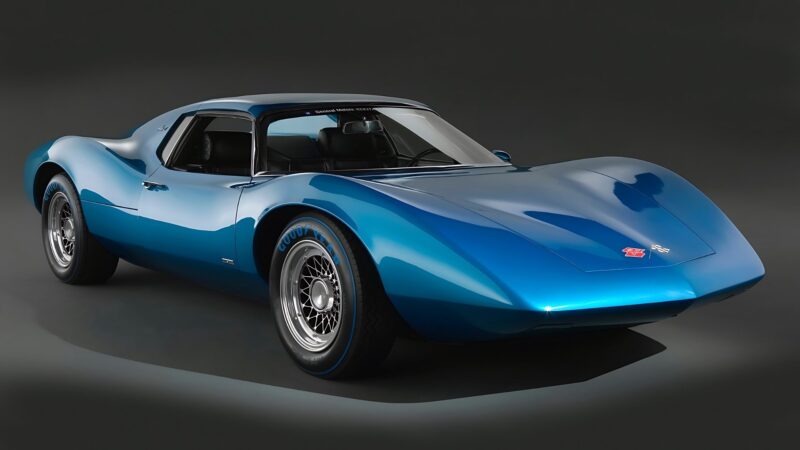
Unveiled at the 1968 New York Auto Show, the Astro II was Chevrolet’s audacious attempt to reimagine the popular Corvette with its engine behind the driver. Dubbed XP-880, the sleek fastback concept packed a 427-cubic-inch big-block V8 in a layout GM engineers believed was not only radical but also production-feasible. While its aluminum bodywork and flowing proportions hinted at a more exotic Corvette, tradition prevailed, and the project was quietly shelved. Still, the Astro II lit a spark that refused to die. A vision that would linger on for decades, that dream would finally be realized with the mid-engined C8 over half a century later.
1970 AMC AMX/3
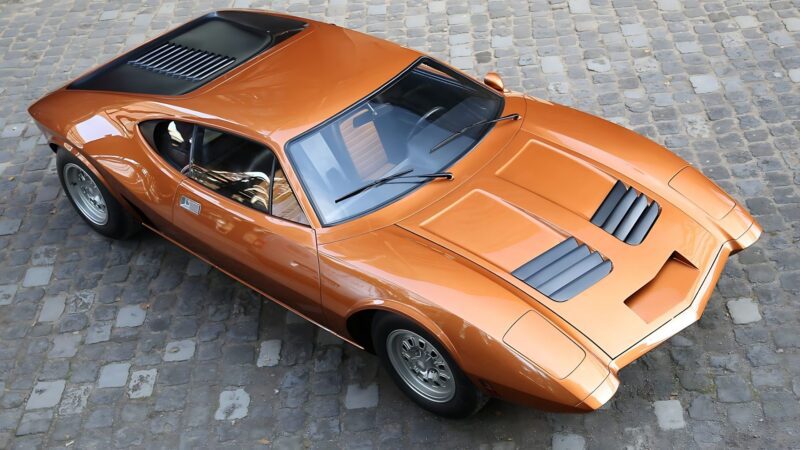
Back in the late 1960s, AMC, often considered one of the more unconventional American performance carmakers, had its mid-engine ambitions. The AMX/3, penned by legendary designer Dick Teague and engineered in Italy by ex-Ferrari maestro Giotto Bizzarrini, fused American muscle with European sophistication. Beneath its sculpted steel skin lay a 390-cubic-inch AMC V8 that put out 340 horsepower. Only five road-ready prototypes were built before rising costs and looming safety regulations brought the project to a halt. In another timeline, though, this was Detroit’s Pantera; only purer, rarer, and arguably more beautiful.
1976 Chevrolet Aerovette
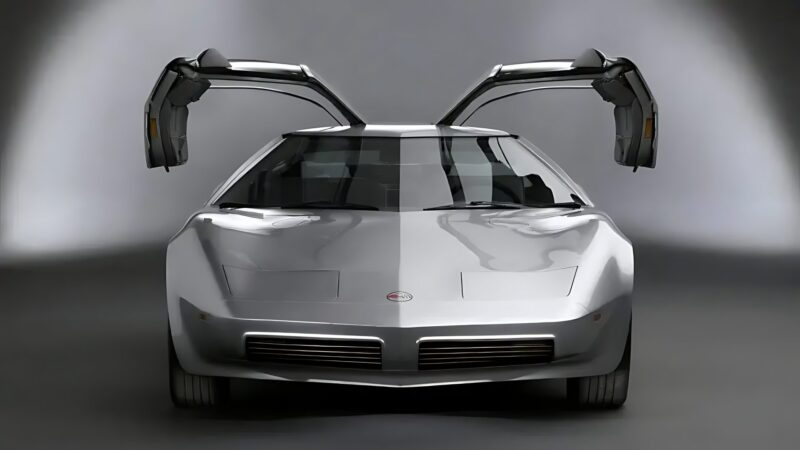
By the mid-‘70s, GM’s exploration of mid-engine Corvettes would eventually evolve into something eerily close to production. Enter the Aerovette: a gull-wing vision that was built around a mid-mounted V8. Initially, the XP-882 (1969), then XP-895 (1972), before becoming the Aerovette, it was originally powered by a rotary engine (which was all the rage at the time), the Aerovette would eventually be retrofitted with a 6.6-liter or 400ci small-block V8. Beyond its dramatic layout and fighter-jet aesthetics, the Aerovette featured advanced aluminum body panels, a lightweight backbone chassis, and one of GM’s earliest uses of wind tunnel testing for aerodynamic refinement. This was arguably the closest the Corvette ever came to going mid-engine before the C8. GM even approved a production version before cold feet and conservatism won out.
1986 Corvette Indy Concept
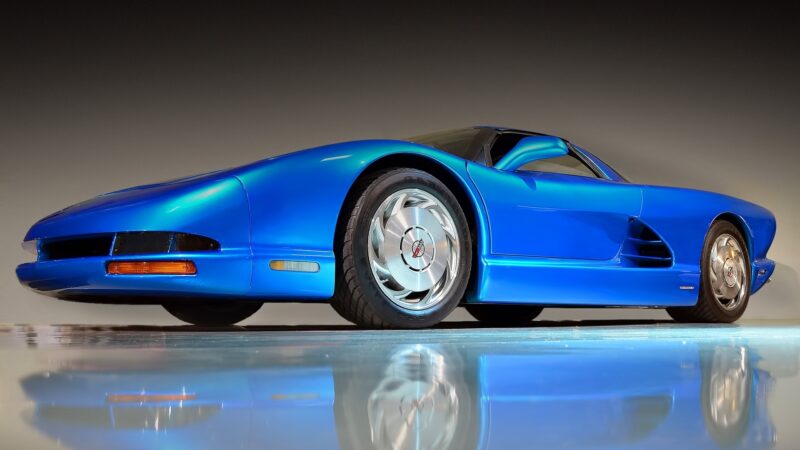
By the mid-1980s, the C4-era of the Corvette was already underway, but GM’s mid-ship ambitions had not been laid to rest. Picking up where the Aerovette left off, the Corvette Indy Concept, unveiled in 1986, was a dramatic, mid-engined vision packed with advanced technology. Beneath its sleek carbon-kevlar shell sat a twin-turbo V8 derived from IndyCar, paired with all-wheel drive, four-wheel steering, active suspension, and a composite backbone chassis. Even the canopy was wrapped in jet-fighter glass, and Lotus, which had been recently acquired by GM at the time, assisted with chassis development. The design previewed cues that would trickle down into production Corvettes in the decade to come. Though never destined for the street, the Corvette Indy was a rolling testbed that laid the groundwork for the CERV III and reflected GM’s ambition to reassert technological dominance on the global stage.
1988 Pontiac Banshee IV
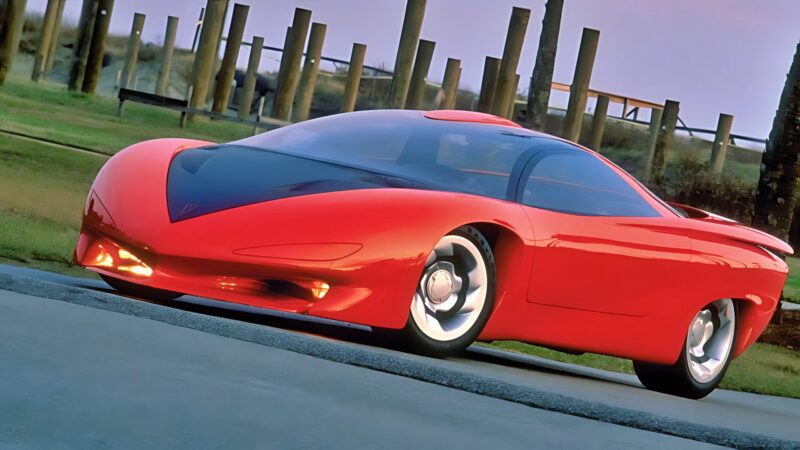
Just two years later, Pontiac’s design studios unleashed the Banshee IV, a futuristic sci-fi-inspired wedge that looked like it had warped in from the future. Underneath, it shared DNA with the C4 Corvette, but the design was equally theatrical with pop-up lights, retractable spoilers, glass canopy. Inside, digital gauges and fighter-jet ergonomics screamed peak ‘80s. There were even rumors swirling that the Banshee could replace the Corvette entirely. The Banshee was simply too advanced, too bold, and perhaps too much of a threat to the Corvette’s crown. Still, it left behind a trail of influence that future Pontiacs would quietly embrace.
1990s–2000s Vector WX-3 / WX-8
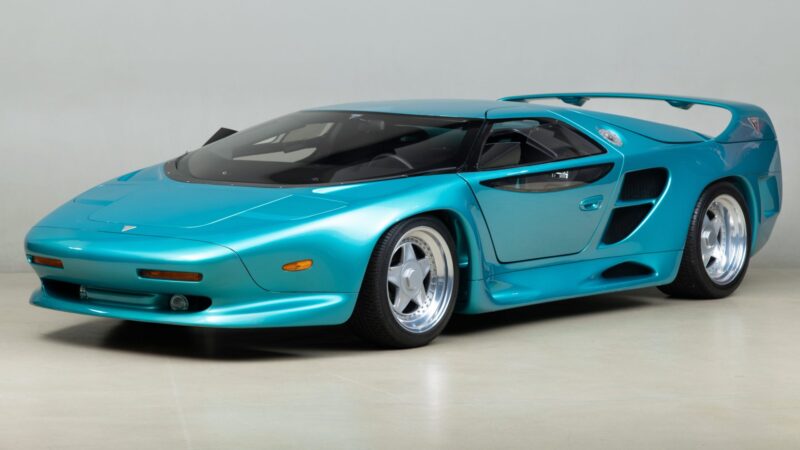
If there’s an American manufacturer that had the potential to challenge Europe’s dominance in the exotic car world through the late 1980s and early 1990s, Vector was unquestionably at the top of that list. Led by the irrepressible Jerry Wiegert, the California-based outfit hit it big with the W8 (1989-1993), which made headlines with its angular, aerospace-inspired design and twin-turbo V8. But it really was the follow-up concepts, i.e, the WX-3 and later WX-8, that aimed even higher. With projected outputs north of 1,000 horsepower, military-grade materials, and advanced cockpits that felt more fighter jet than grand tourer, these machines were outrageous and defiantly American. Though they never progressed beyond the prototype stage, they were a vision of performance that didn’t follow European rules, but rewrote them entirely.
1995 Ford GT90
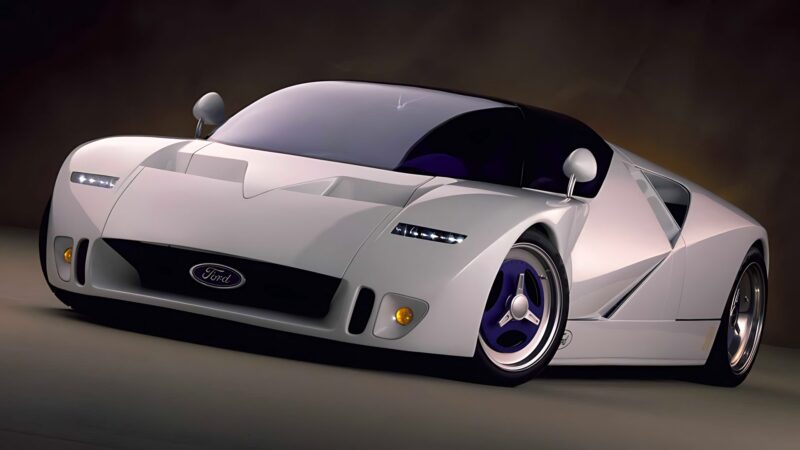
The GT90 was a spiritual successor to the iconic GT40 of the 1960s and was a symbol of Ford’s technical prowess. Ford’s answer to Ferrari in the ‘90s, Beneath its radical, origami-like “New Edge” design sat a quad-turbocharged 6.0-liter V12 producing 720 horsepower, an engine created by fusing two modular V8s. Built atop a Jaguar XJ220 chassis, the GT90 featured active aerodynamics, a fully digital instrument cluster, and white ceramic space-shuttle tiles in the engine bay to manage the extreme heat. It stole at the 1995 Detroit Auto Show, and although it never entered production, the GT90 didn’t need a showroom to make an impact. It remains one of the most iconic American concept cars of the era.
2002 Cadillac Cien
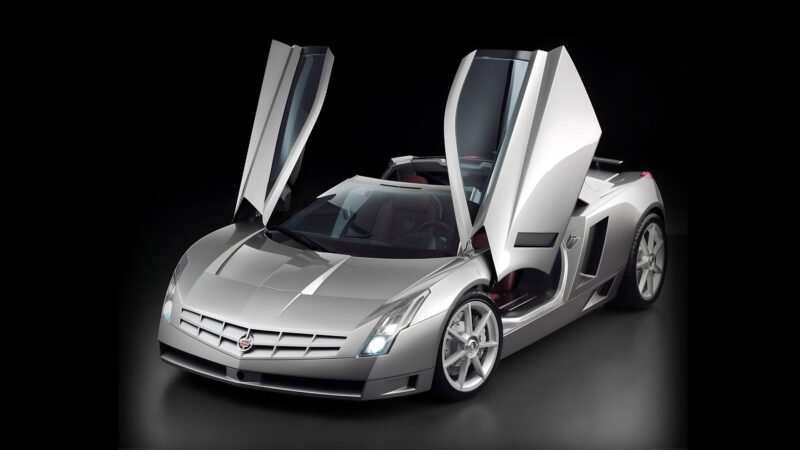
When Cadillac turned 100, it showcased the Cien, revealed at the 2002 Detroit Auto Show. A car that combined stealth-fighter geometry with a 7.5-liter Northstar V12, it was good for 750 horsepower. A brand renowned for luxury cars, the Cien’s carbon fiber monocoque, active aero, and scissor doors pushed Cadillac into uncharted territory. It was certainly GM’s boldest attempt to redefine American luxury performance and the closest Cadillac has come to building a true supercar for the road. Yet high costs and shifting priorities shelved the project. But things are coming full circle as Cadillac continues to build a strong reputation in the world of motorsports with its Hypercar and, soon, an F1 debut next year.
2004 Chrysler ME Four-Twelve
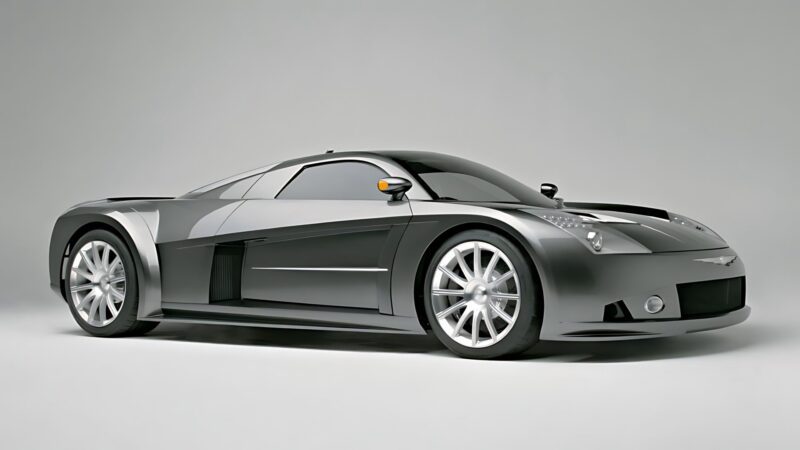
Frankly, no one saw it coming. At the 2004 Detroit Auto Show, Chrysler stunned the crowd with a carbon-fiber-bodied monster: the ME Four-Twelve. With an 850-horsepower AMG-sourced V12 and a projected 0–60 time under 3.0 seconds, it was America’s answer to the McLaren F1. Ralph Gilles, as head of design for Chrysler, oversaw the project and was involved in its development, but the Chrysler ME Four-Twelve concept was primarily designed by a team led by Freeman Thomas. While the car looked ready for Le Mans, this was just a concept, although one with fully functional hardware. Chrysler test-drove it, benchmarked it, and even hinted at production, but Daimler’s cost-cutting axe fell hard, and the ME faded into legend.
2008 Saleen S5S Raptor
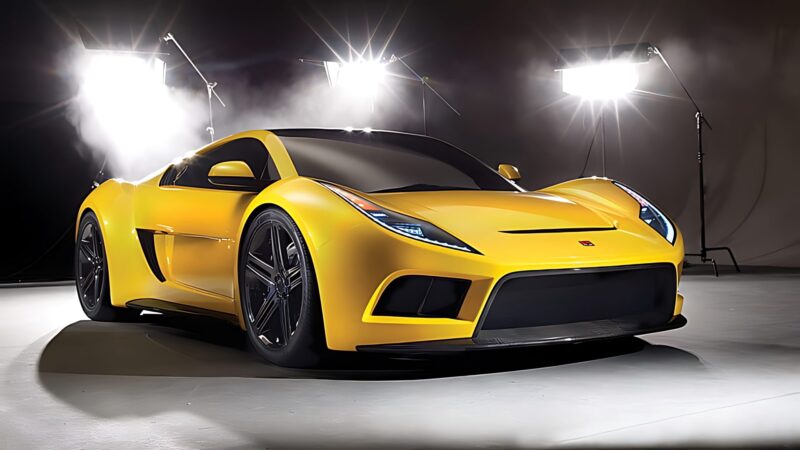
As the financial crisis loomed, Saleen dared to dream. The S5S Raptor, unveiled in 2008, was a sleek, sculpted mid-engine exotic that could’ve undercut the Corvette ZR1 with 650 horsepower. Designed by ASC and built for the streets, the Raptor promised production-readiness and real-world performance. Saleen even quoted a price: $185,000. But with credit markets crashing and boutique automakers struggling to stay afloat, the Raptor remained a concept. Still, it spoke volumes: America wasn’t done dreaming. As the economy was in a tough phase at the time and the road to recovery would eventually come, Saleen’s timing with the S5S wasn’t ideal, but it showed there was still room for speed, beauty, and that classic mid-engine magic.
Images: Ford, GM, Chrysler, Saleen, AMC, Vector

